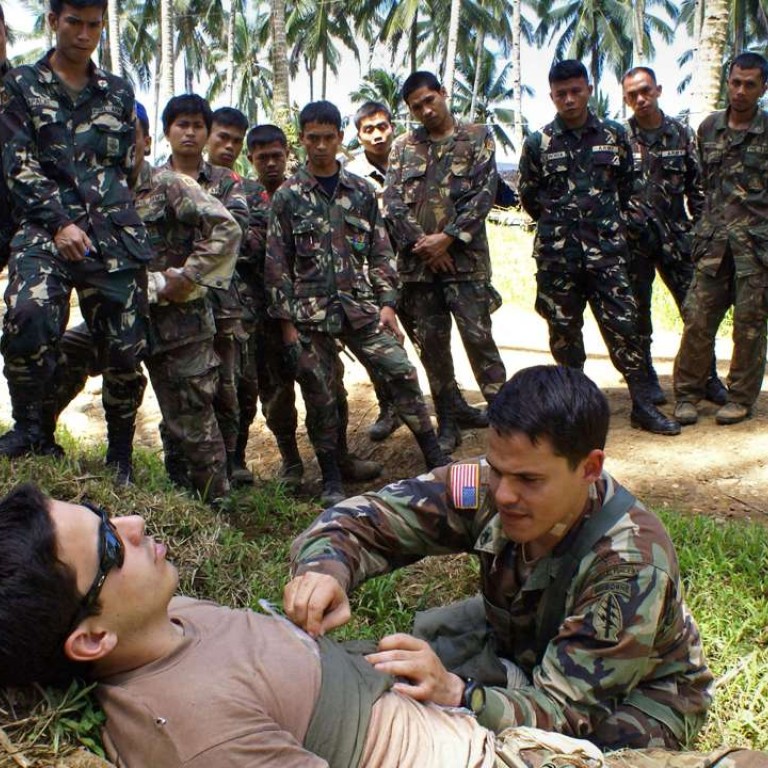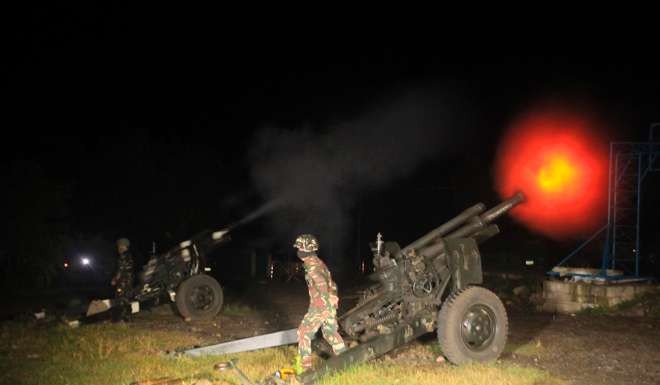
Duterte wants US forces out of southern Philippines - but nobody told the Americans
Philippine president said US military presence could complicate offensives against Islamist militants notorious for beheading Westerners
Since 2002, up to 600 US advisers have been deployed in the Mindanao region to train troops battling Muslim extremists but their numbers have been scaled down in recent years.
A week after using a slur in anticipation of a meeting with US President Barack Obama, the incendiary leader said Monday US Special Forces in the region “have to go”.
Foreign Secretary Perfecto Yasay however attempted to downplay Duterte’s comments, saying Tuesday they were “in the context of wanting to save the lives of these Americans who might be exposing themselves to unnecessary risk” from militant attacks.

In Washington, the Pentagon and State Department said they had not been officially contacted by Manila about pulling out the remaining advisers, who Yasay said now numbered about 100.
“We will continue to consult closely with our Filipino partners to appropriately tailor our assistance to whatever approach the new administration adopts,” Pentagon spokesman Gary Ross said.
White House spokesman Josh Earnest emphasised shared concerns and interests with the Philippines, then took a thinly veiled swipe at Duterte. Earnest appeared to compare Duterte - who won a May election by a huge margin - to Donald Trump, the outspoken Republican candidate in the November 8 presidential election.
“Elections do say a lot about what kind of person is going to represent your country on the international stage...” he told a regular news briefing.
“That’s certainly something that the Filipino people are well aware of.”
Yasay confirmed the allies had not discussed Duterte’s demand.

He has said the spat was triggered by State Department criticism of his controversial war on drug crime, which has left about 3,000 people dead since he began his six-year term in July.
Yasay stressed that Duterte’s new comments did not signal a shift in policy, and that ties with the US remained strong.
The president only wanted to protect Americans from kidnappings and terrorism as they had become “a very good target”, Yasay said.
“There is no shift in so far as our policy is concerned with respect to our close friendship with the Americans.”
Yasay, who was heading to Washington for talks, added the Duterte administration would honour existing defence agreements including a 2014 accord giving the US military access to at least five Philippine bases, one of them in Mindanao.

His comments were in sharp contrast to an initial explanation by Duterte spokesman Ernesto Abella, who said the demand “reflects (Duterte’s) new direction towards coursing an independent foreign policy”.
On Monday, just days after expressing regret that his strong language had “come across as a personal attack” on Obama, he insisted he snubbed the US leader after their scheduled bilateral meeting in Laos was cancelled last week.
“I purposely did not attend the bilateral talks between Asean countries and the president of the United States,” Duterte said.

“I really skipped that one.”
“You just cannot (lecture) a president of a sovereign state. Even Obama. It would have been wrong for him to do that. That is why I disrespected them.”
On one evening, Duterte - sporting a black-velvet suit - was seen at the venue walking over and introducing himself to Chinese Premier Li Keqiang for the first time.
“If you want to work on the side of peace, you shake the hand of the person right next to you,” Martin Andanar, Duterte’s communications secretary and former television news anchor, said.
Additional reporting by Bloomberg and Reuters

.png?itok=arIb17P0)